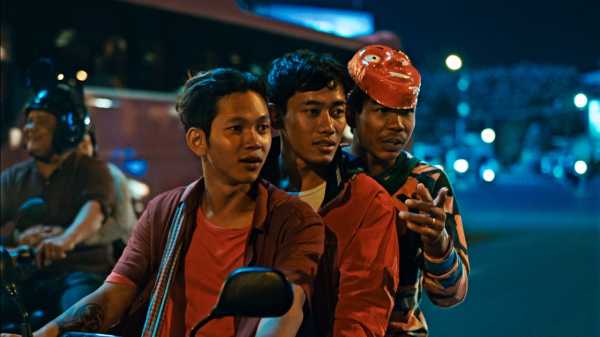
Save this storySave this storySave this storySave this story
Most people have something interesting to say about their home town, their families, the people they grew up with, the issues and the concerns of their friends and neighbors. That’s the prime way that fiction films converge with documentaries: when directors tell stories that are close to their experience. Even relatively unoriginal filmmakers often make admirable films in this mode, which, above all, requires thoughtful observation, empathetic alertness, and, an even rarer quality among filmmakers, humility—the modesty not to render an everyday drama grandiose with the addition of elements borrowed from genre conventions or spectacular movies. Yet there’s another, more peculiar form of immodesty that also often spoils realistic movies, especially ones in the international auteur market: willful understatement, conspicuous reticence in the interest of creating artful enigmas, as if caginess were a mark of art.
The Cambodian director Kavich Neang averts both of these temptations in his first dramatic feature, “White Building,” which opens Friday. He stakes out a cinematic middle ground in order to depict central lines of power and conflict as they’re experienced in Phnom Penh, Cambodia’s capital and metropolis, by people living ordinary lives with their own distinctive impulses and passions, desires and troubles. A young man of twenty named Samnang (Piseth Chhun) lives with his mother (Sokha Uk) and father (Sithan Hout) in the building of the title, a dilapidated, enormously long three-story apartment complex in the heart of the city. Among his neighbors are his two best friends, Ah Kha (Chinnaro Soem) and Tol (Sovann Tho); the three young men are working on a hip-hop dance routine that they busk with at cafés and night clubs, rushing from venue to venue on Samnang’s motorbike with the intention of eventually entering a dance competition and fulfilling their dreams of stardom.
But the firm basis of the protagonist’s life is cracking. First, the building itself is menaced: the Ministry of Land Management is working hand in hand with the building’s owners, called only the Company, to remove all the residents, in apparent view of demolishing the working people’s complex and replacing it with something more profitable. They use the carrot and the stick: buyout offers along with deprivation of basic services such as running water. The residents have organized to negotiate their demands with the Company, and the so-called chief of the organization is Samnang’s father, a retired sculptor.
The scenes of the residents’ meetings set out, in their vigorous and often acrimonious discussions, a view of the general state of things: the price of housing in the city has risen dramatically, the buyout terms don’t come close to enabling residents to live anywhere nearby, and the tenants’ lives risk major disruptions, with some ready to break off talks and simply defy the authorities by staying. Meanwhile, the chief is ill; he was diagnosed long ago with diabetes, and now a sore on his toe seems to be progressing into a serious infection, yet the family can’t afford appropriate medical treatment. Circumstances separate Samnang’s trio of dancers, but Samnang himself hasn’t relinquished his dreams or even his efforts; he becomes increasingly involved in his father’s negotiations as they become increasingly confrontational.
Neang, who wrote the script with Daniel Mattes, sketches his characters deftly, delineating personalities and inclinations in closely observed touches; these include the three young men’s romantic and sexual yearnings (leading to a drolly inept pickup effort from aboard the moving bike) and the looming power of Western aspirations, which range from pop culture and branded clothing to the dream of emigration. The friends’ conversations, on a rooftop or on a road where the bike has given out, are balanced by extended sequences showing the impingement of public concerns in private lives, whether in medical offices or in a dramatic car ride with a government official. Neang has a keen eye and ear for the sights and the sounds of city life, as displayed in the film’s broad urban panoramas and its views of teeming activity in and around the building, extreme closeups of manual labor (such as the preparation of food) and of the physical damage to the building (and, for that matter, the physical damage to the chief’s body). A scene of tense debate between Samnang and his sister, Samphors (Chandalin Y.), who is living on her own, takes place as they set out pieces of fish on mats to dry in the sun. I’ve read that the story of “White Building” is partly autobiographical, but I knew it already. The movie seems lived-in; its virtually tactile details and its trenchantly analytical dialogue feel like intimate aspects of the filmmaker’s audiovisual, emotional, and intellectual experience. Its images have a plainly assertive, affirmative authenticity that resounds with the power of memory, and that makes the viewing experience profoundly memorable. ♦
Sourse: newyorker.com






